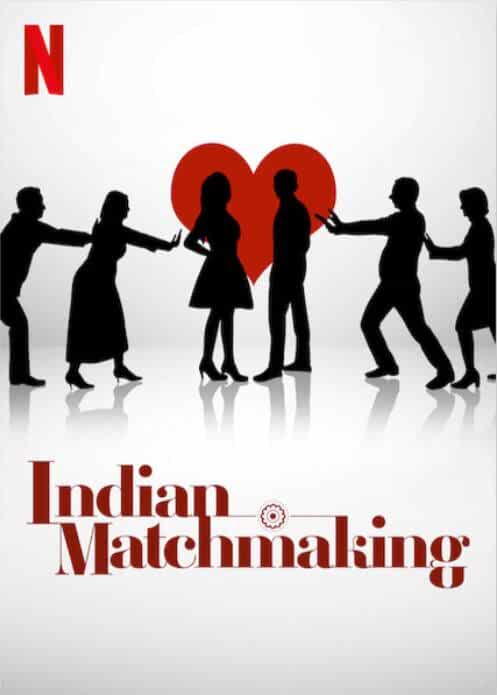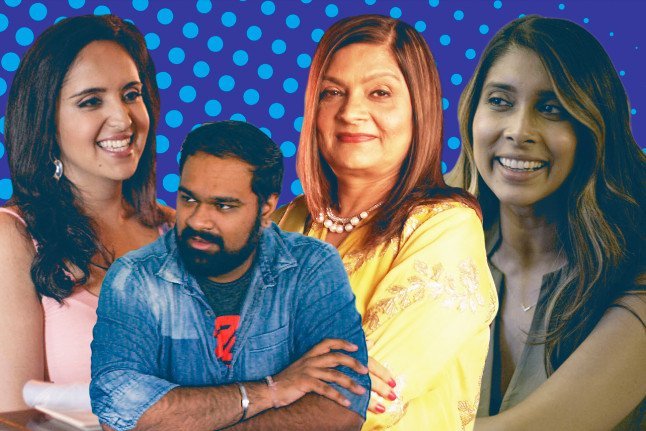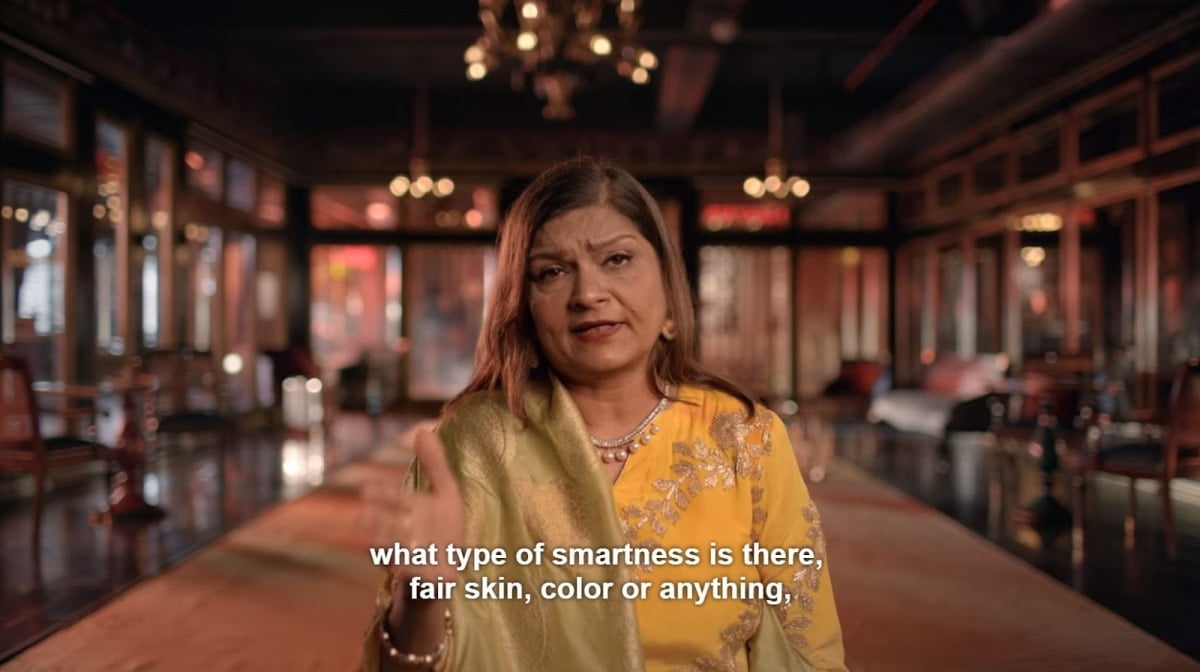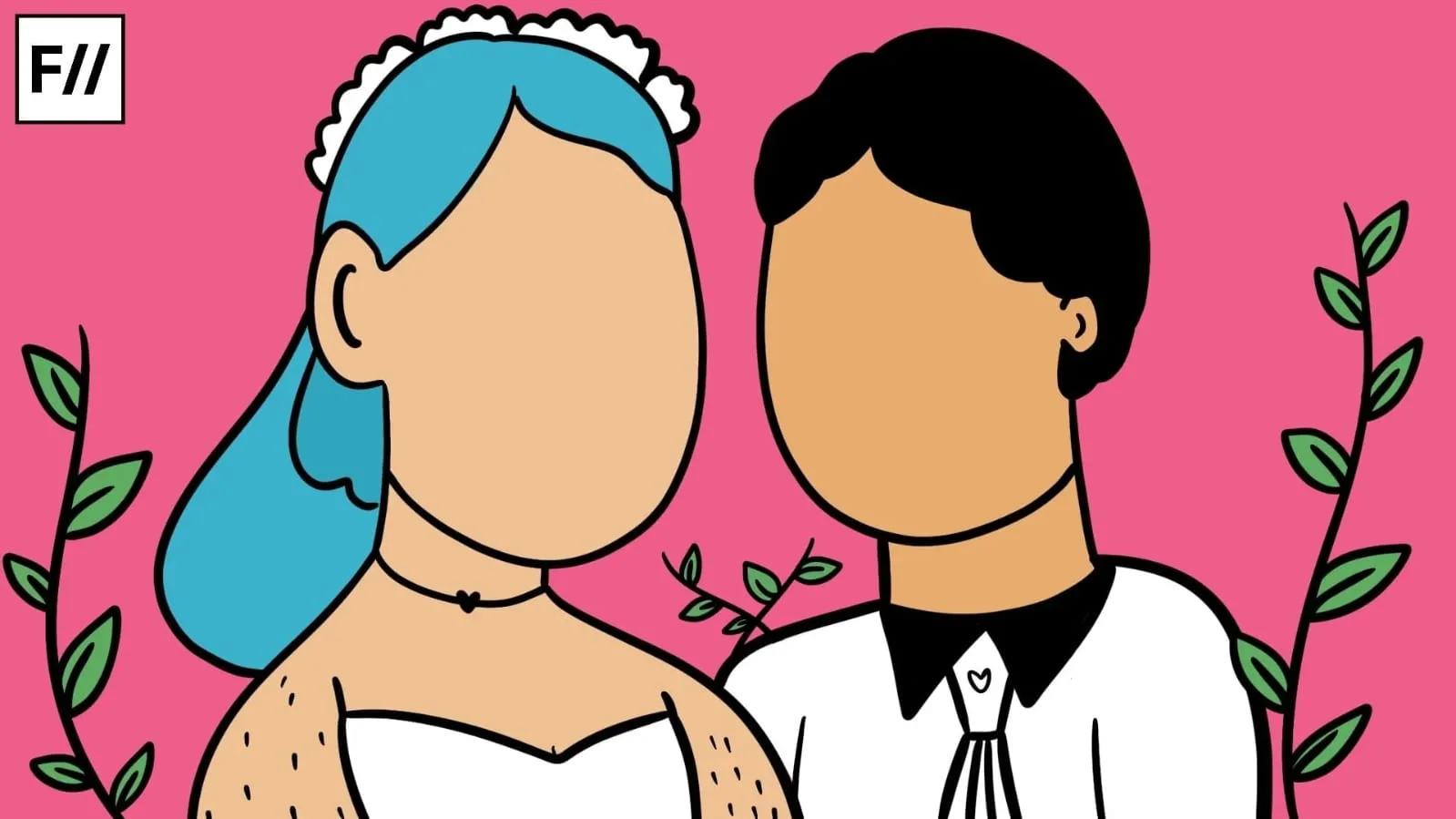Warning: Spoilers ahead!
Netflix’s latest reality dating show, Indian Matchmaking gamifies Indian caste and class anxieties related to marriage. Sima Taparia, a Mumbai-based professional matchmaker, guides affluent young South Asians in the United States and metropolis like New Delhi and Mumbai in choosing life-partners that match their personal criteria. The show ostensibly celebrates the matchmaking process, but in a clever editing routine possibly also mocks the glaring contradictions of gendered expectations (“adjustment and compromise” from women and men’s nonchalant rejection of 150 suitors).
While there is plenty to be said about upper-class and upper-caste motivations to wed their children to certain people at a certain age, arranged marriages and the matchmaking journey are marketed as alternative dating formats (something which is not new to Netflix given shows like Love is Blind). Nonetheless, Indian Matchmaking uncritically brings in tow problematic notions related to women’s agencies in marriage that are uniquely South Asian, as it garners immense viewership since its release on July 16, 2020.
Indian Matchmaking (2020)
Director: Smriti Mundhra
Synopsis
The premise of the show is simple: Sima Taparia offers a multi-national (and presumably expensive) matchmaking service. She finds suitable ‘matches’ for her clients based on their preferences, which range from open-mindedness to being “not too dark.” Clients go on dates (or ‘meetings’ as Sima calls them) and decide if they would like to proceed with the courtship. The show is packaged as eight, forty-minute episodes in Season 1 with a select dozen of Sima’s clients interviewed intermittently in documentary style, along with Sima’s personal (and lest I say, professional) judgements on her clients’ prospects.
The exposition scenes of each episode feature couples who wed suitors of their parents’ choice, in a near glorification of ‘love at first sight’ or not seeing your future spouse. It is truly endearing—the way in which some couples describe their long married lives with ‘arranged suitors’—but at the same time downplays the harms associated with arranged marriages in India, and how they disproportionately disrupt women’s lives. These realities include honour killings for marrying outside one’s caste or religion, domestic violence, and women forced to quit their careers and become home-makers against their will.
This willful shirking of the realities of arranged marriages and its harms on women’s agencies underscores every cringe-y comment on fair-skinned preference, educational qualification and desires to marry a tall person. Moreover, Sima is a sensational ‘hard worker’ on the show, who employs astrology, face reading and life coaching to assist her process, not to mention her absurd register of eligible bachelors and bachelorettes containing details on caste, height, previous marital status, education among other categories. Indian Matchmaking is deliberate in keeping the shots of Sima’s hypercritical commentary on working women and physical attractiveness, but at the same time moulds her as a beloved figure—much like matchmakers in real life.
Indian Matchmaking is deliberate in keeping the shots of Sima’s hypercritical commentary on working women and physical attractiveness, but at the same time moulds her as a beloved figure—much like matchmakers in real life.
Matchmaker Sima Taparia
Clearly, the shuttling between the US and India represents the dynamism of Sima’s job. Her clientele is largely composed of wealthy millennial Indians (noticeably devoid of religious or ethnic diversity). The matchmaking, however, emphasizes the importance of family and parents as authority figures, often diluting the agencies of young people in the process. This focus on “marriage as one between families” adopts a distinctively hetero-normative and status-conscious gaze that scouts for the perfect fit to maintain the family’s respectability.

Despite promising attempts to be authentic, many of Sima’ recurring clients in Season 1 are no less than caricatures. Predictably, those cast on the show are overwhelmingly upper-class and upper-caste Hindus who can access Sima’s services. Houston-based Aparna is career-oriented and seeking someone who will fit into her existing life. As expected Sima consistently disapproves of her inflexibility and “stubbornness.”
Nadia, an Indo-Guyanese event-planner in New Jersey, is desperate to shed off her singleton life, and is both ghosted and rejected (for ordering an alcoholic drink at the date) by suitors offered by Sima. Pradhyuman is the son of a well-to-do jeweler in Mumbai, looking for a woman who can physically attract him. Also based in Mumbai, is Akshay who defers responsibility to his mother, Preeti in an epitome of an Oedipus complex. We also encounter Vyasar, a college counsellor and next-door-funny-guy who is learning to appreciate the process (although not for long), as he grapples with his turbulent family history.
Towards the last episodes, Sima works for two more clients—Ankita, an entrepreneurial Delhiite, labelled “chalu” and “strongheaded” and eventually decides against courtship for marriage; and Rupam, a Sikh divorced, single mother in Denver whose options are limited according to Sima. Women receive more flak from Sima for their indecisiveness and preoccupations with their careers. Men, on the other hand, garner Sima’s patience and sympathy, even if they are picky.
Women receive more flak from Sima for their indecisiveness and preoccupations with their careers. Men, on the other hand, garner Sima’s patience and sympathy, even if they are picky. It might have been more tasteful to make a satire of Sima’s sexism and arranged marriage (and their questionable success). But the show wants you to root for Sima and her clients’ success; Given the known problems associated with arranged marriages one would expect a satire.
It might have been more tasteful to make a satire of Sima’s sexism and arranged marriage (and their questionable success). But the show wants you to root for Sima and her clients’ success; given the known problems associated with arranged marriages one would expect a satire.
Also read: Endogamous Love: On Love Jihad & Marriages In India

Smriti Mundhra
The director and executive producer, Smriti Mundhra shares a close relationship with Sima Taparia. Sima was her wedding matchmaker and also featured in Mundhra’s 2017 documentary, Suitable Girl, which explored the Indian ‘marriage industrial complex’. Mundhra is well-known for her award-winning progressive art but has received much criticism for her first venture into television.
Mundhra responded to criticisms saying that the show intends to “spark necessary conversations“. In the same interview, she admits that filmmakers often have an unsaid burden to educate their audience. Yet, does not fully lend that understanding to Indian Matchmaking.
Many reviewers have also termed the show as a mirror to society and a prompt for meaningful discussions on sexism, colourism and casteism. Unfortunately, this logic is faulty insofar Sima Taparia is a glorified figure and preferences are stand-ins for deeply entrenched biases (cue the encouraging music). It will be reductive to say that airing on Netflix “does not sensationalize” the show.
Taking the show at its best, Mundhra’s artistry comes out in the unapologetic depiction of urban Indians, self-obsessed and vulnerable. The camerawork is delicate, bringing out considerable authenticity of the cast.
Overall, Indian Matchmaking has appropriated arranged marriages to monetize on an OTT platform. The background score aptly complements key moments in the show, tempting viewers to watch more. The non-competitive reality television set-up and the masterful editing enable a full capitalization of marriage and traditional matchmaking of the Sima Taparia kind.
So, is it watchable?
It is believable that Indian Matchmaking was a missed opportunity to openly talk about the ills of caste endogamy, internalized colourism and deeply entrenched sexism in Indian society and diaspora. It undoubtedly takes an opposite route—celebrating and sensationalizing what is a distressing process for many people, particularly gender and sexual minorities, women, Dalits, Muslims and those with disabilities.
Also read: Arranged Marriages and the ‘Quest’ of a Suitable Match
Indeed, the fact that Indian Matchmaking is a highly watchable show does not shied it from warranted criticisms. Undeniably, the show’s discomforting ugliness in its sexism, classism, casteism, ageism, colourism makes it a terribly triggering show to watch. It discounts the violence of arranged marriages in India and the anxieties surrounding endogamy, while purposefully capitalizing on trauma.
Featured Image source: Indiatoday.in
About the author(s)
Sajneet is a History nerd who loves to bicycle.





It is very well written and I think rightly highlights the problem and concept associated with it.